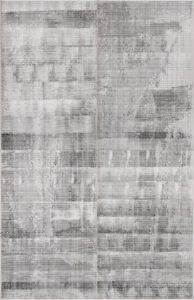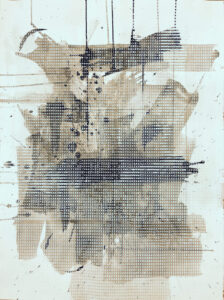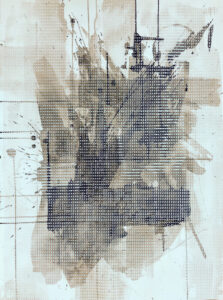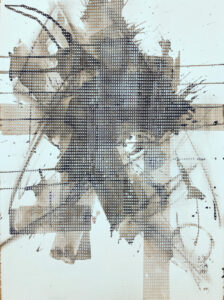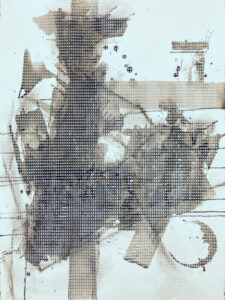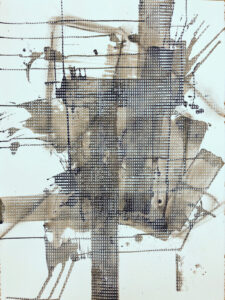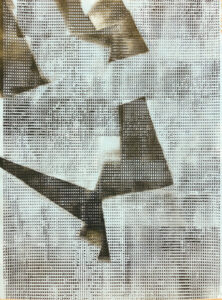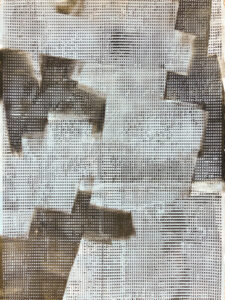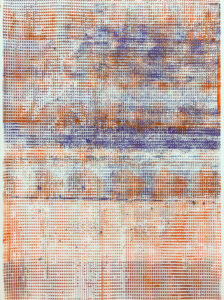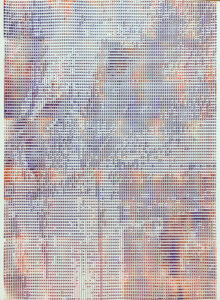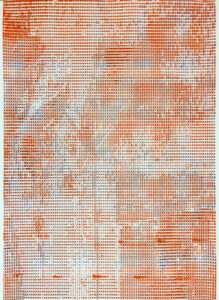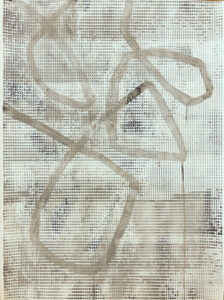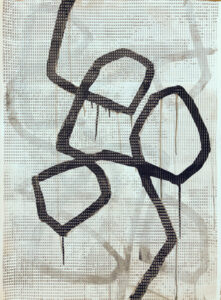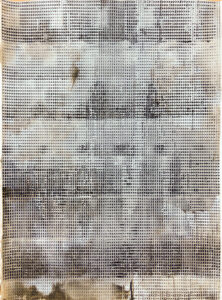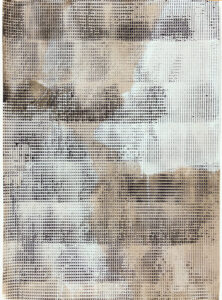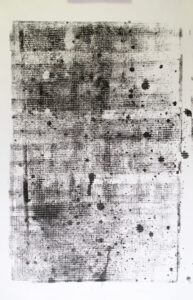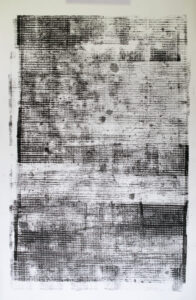This series explores the use of ASCII images in painting, as a means of playing with scale.
The works create two distinct experiences for the viewer: The global patterns that emerge when viewing the works from a distance, and the symbols that are only legible when viewed close up. The disjunction between scales is not unlike our everyday experiences with screens: From a distance, we see an image but, up close, we can see the individual pixels that form the building blocks of that image. This work was inspired by the paintings of Jacqueline Humphries.
This project involved the use of laser-cut Mylar stencils. The stencils were created from an ASCII image derived from De Kooning’s Door to the River (1960). The image was divided into four quadrants, producing 4 stencils, each of which was 24 by 36 inches.
I ended up making three sets of prints using the stencils. In the first, the stencils were printed onto vellum sheets of the same size as the stencils, with the goal of assembling them into a single large image.
In the second set, the stencils were printed onto sheets of heavy watercolor paper, which were then overpainted, and then the stencils were printed on them again. The imperfect alignment and partial overpainting produces a kind of “echo” of the stenciled characters. In other pieces an underpainting was created first, and the stencil painted over the top in white to create an illusion that the stencil is punching holes through the painting back to the ground.
The third set of images was created by printing the inked surface of the stencils (after the stencil had been used to create one of the works above) onto oversized paper that was first sprayed with water to get a better transfer. These “reverse” prints are highly irregular due to the unreliability of the transfer process and drops of water that formed on the paper surface after spraying it.
